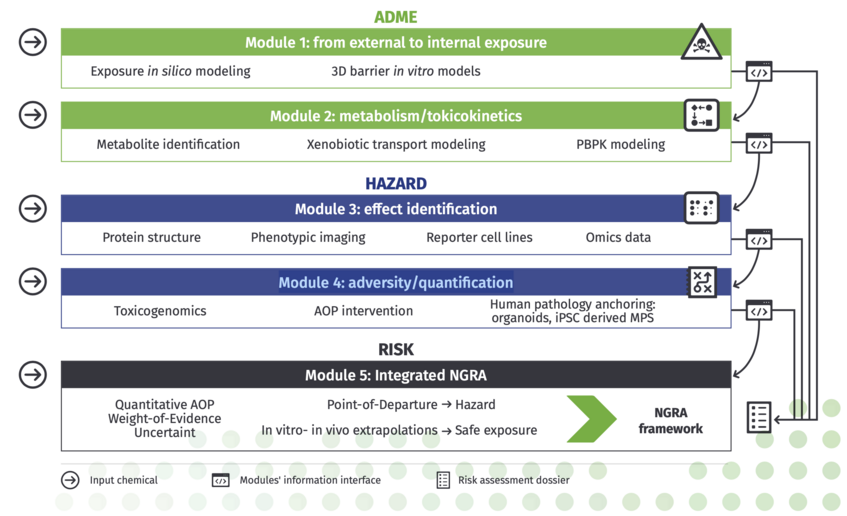About RISK-HUNT3R
The vision of the RISK-HUNT3R consortium is to develop a reliable, efficient and cost-effective chemical safety assessment approach. It will be based entirely on non-animal methods and provide improved protection of the human population against systemic health effects caused by (chronic) chemical exposure. The major innovation provided by RISK-HUNT3R is a complete and truly human-centric risk assessment strategy.
RISK-HUNT3R will establish, optimize and assemble all essential safety testing elements:
- exposure assessment,
- information on chemical distribution in the body,
- hazard characterization,
- adverse outcome prediction and
- determination of actual risk in defined scenarios.

Source: RISK-HUNT3R Flyer
RISK-HUNT3R integrates cutting-edge in silico (computational) and in vitro (experimental testing) technologies. Human (disease) genetics and exposome data will ensure anchoring of test results to the human situation. The project will ensure regulatory relevance by testing the applicability of the critical test systems integrated in the next generation risk assessment strategy.
The ambitious overall deliverable will be a comprehensive computational framework for the prediction of human adverse outcomes, and a set of stringently evaluated assays to feed the required data into this framework. RISK-HUNT3R will engage with all key stakeholders from different industry sectors and international regulatory agencies to critically evaluate and warrant genuine acceptance of the novel safety testing framework. This unique interaction of these key stakeholders working together on real-world case studies, will result in a ready-to-apply strategy to ensure societal protection against hazardous chemicals fully in concordance with the European Commission’s "Green Deal". Importantly, the project will push commercial exploitation of the validated safety assessment approaches, thereby ensuring sustainability of the project outcomes and fortifying the innovation capacity of the industry sectors involved.
Please also have a look at the official article at University of Leiden.
